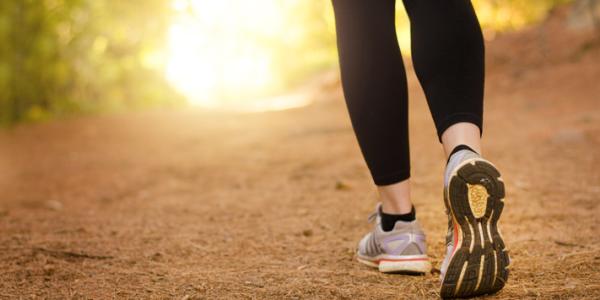
We all know how important regular exercise is for staying healthy and reducing the risk of many diseases. Physical activity is good for your body, but the mental and emotional benefits are equally important. COVID-19 has impacted nearly every aspect of our lives, from disrupting our daily routines and healthy habits to causing significant increases in anxiety and stress. But finding time most days for exercise or activities that get you moving can help. The key to making exercise a sustainable and consistent part of everyday life is simple: pick the right kind of activities for your needs and lifestyle.
The Centers for Disease Control and Prevention (CDC) recommends that adults get at least 150 minutes of moderate activity or 75 minutes of vigorous activity every week. That may sound like a lot, but if you enjoy what you are doing it’s pretty easy to log 30 minutes or more every day. Plus, once you start feeling the positive effects of your efforts you’re much more likely to keep going. Just choose a few activities based on your goals and preferences, and in 30 days you’ll have a healthy habit you won’t want to break. These tips can help you get started and stay motivated.
Determine your exercise personality. Would you rather go it alone, or are you more motivated if you have a partner to keep you accountable? Do you enjoy the camaraderie of team sports or is a small class more your style? Would you prefer to be indoors or outside? Are you better with a set routine, or do you need something more flexible? Of course you can mix it up, but it’s important to think about what environments are most appealing to you.
Choose activities you’ll enjoy. Don’t force yourself to do something you dislike when you can find a more enjoyable alternative. Running is a terrific way to improve cardiovascular health, burn calories, and reduce stress. But, if you hate to run, try another activity that has the same benefits and is more to your liking, such as brisk walking, hiking, or kick-boxing. If weight machines in the gym are intimidating or inconvenient, circuit train at home with a series of squats, push-ups, planks and other strength-building exercises.
Vary the intensity. To increase your fitness and improve your health, it’s important to vary the intensity of your activities. If walking at a comfortable pace is your primary activity, consider alternating a day or two with a higher intensity activity, such as hiking, treading water, or dancing. If you gravitate towards fast-paced sports such as tennis or soccer, lower the intensity a few days a week by going for a long walk or doing some laps in the nearest swimming pool.
Match your activities to your goals and limitations. Any type of regular exercise will improve your health and well-being. But it’s important to keep your specific goals – and limitations – in mind when you choose your activities. If flexibility and balance are a concern, consider tai chi or yoga. If you are very overweight or have joint pain, focus on low-impact activities such as bicycling, swimming, and walking. If connecting with others is important, look for community sports leagues or activity-specific clubs, such as hiking or cycling. If you are short on time, consider high intensity interval training (HIIT) to get maximum results from even short workouts. If you prefer activities you can do at home, try an online yoga or dance class.
Consider a trainer or coach. If you aren’t sure how to get started, haven’t been active in a while, or could benefit from a personalized plan and guidance, investing in a personal trainer or fitness coach is a great first step. Certified trainers can help assess your fitness and needs, design a plan to help you achieve your goals, help you avoid injury, and keep you motivated and on track. Most gyms have trainers on staff, but you can also find trainers who will work with you in your home or another location outside of the gym. Just be sure to check their credentials and references before getting started.
Talk to your doctor. If you have any chronic health concerns, haven’t exercised in a year or more or have more than 15-20 pounds to lose, talk to your doctor before starting any new activities to ensure you identify any issues and can move forward safely. If you need help finding a doctor, use the El Camino Health find a doctor tool to be connected with a doctor that fits your needs.
This article first appeared in the August 2020 edition of the HealthPerks newsletter.

